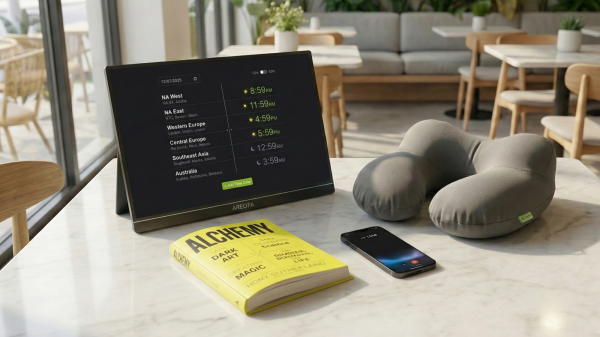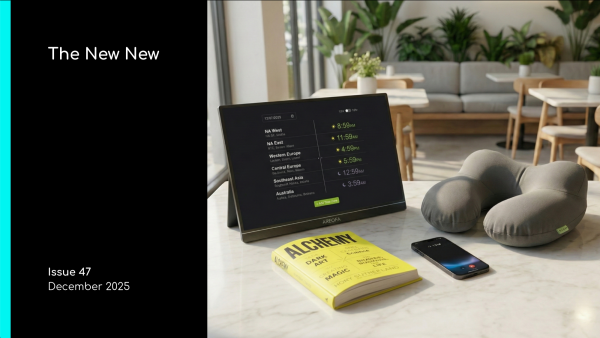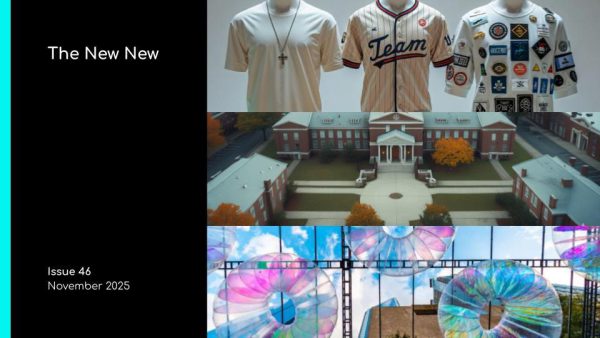The New B2Bs
Why winning the future of marketing means designing for machines first

AI agents are in every headline and hyped marketing campaign right now. They are demoed, promised, theorized everywhere.
Cut through the hype, and you’ll find that true personal agents—autonomous systems working independently for individuals—are still coming. These agents are slowed down by real-world constraints like privacy, security, and integration, but they are coming. (Ask Apple’s Siri. Or Amazon’s Alexa.)
When those barriers fall—and they will—a new layer will rise around us.
The Autonomous Layer Emerges
AI is moving from something we use to something we trust to move ahead of us.
This is bigger than just Thinking on Autopilot.
This is about how AI will soon become ambient—embedded across devices, homes, workflows.
We won’t just ask it questions; it will nudge, filter, and decide—often before we even realize we needed it to.
It’s the beginning of a new kind of engagement—where intent isn’t expressed, it’s inferred.
Where decisions aren’t always surfaced for us to choose—they’re simply carried out.
And that shift is about to redraw the map for brands, marketing, and customer experiences.
The New B2Bs
As autonomous agents become the first line of interaction, the familiar B2B model begins to fracture—and reassemble into something new.
Brands won’t just market to people anymore.
They’ll market to the agentic systems that filter decisions for those people.
And engagement won’t be a straight line. It will unfold across three new dimensions of connection:
- Brand-to-Bot.
Brands will need to win over digital gatekeepers—personal agents programmed to prioritize based on price, values, trust signals, or personal parameters set by the user. Emotional storytelling alone won’t cut it. Agents won’t be swayed by brand campaigns or sleek slogans; they’ll filter with algorithms that optimize for relevance and trust.
- Bot-to-Brand.
Personal agents won’t simply wait for advertising or offers—they’ll initiate interactions. Booking travel. Registering for events. Purchasing services. Brands will need infrastructures ready to recognize and respond to autonomous inbound actions generated by machines acting on behalf of humans.
- Bot-to-Bot.
Increasingly, brand systems and personal agents will transact directly—negotiating offers, validating identities, confirming preferences—all without requiring a human to step in until the final choice needs confirmation.
You can already see the early outlines of this future taking shape.
The rise of AI Visibility Optimization (AVIO)—which we explored back in Issue 36—marks one of the first major shifts. In a world where decisions are filtered by AI before they ever reach a human, traditional SEO is no longer enough.
Brands must now become visible, trusted, and chosen by the agents standing guard between them and their audiences.
Raising the AX
If we’re expanding the map of engagement, we’re also expanding the disciplines built around it.
For years, brands have invested in building strong BX (Brand Experience), CX (Customer Experience), EX (Employee Experience), DX (Digital Experience), and UX (User Experience) strategies. Each one captured a different dimension of how companies relate to people.
But now, something new is emerging: Agentic Experience (AX).
AX is about designing for a world where autonomous systems—not just humans—are active participants. Where agents prioritize, decide, and transact on behalf of their users.
It’s no longer enough to build experiences for screens or for human navigation patterns.
Brands must design for intermediaries: intelligent entities that filter choices, validate trust signals, and act before the user even taps a button.
The early shape of AX is taking form, with Netlify’s CEO Mathias Biilmann emerging as an early voice shaping the space. He has outlined why AX is becoming critical—arguing that as agents increasingly act on our behalf, experience design must evolve to prioritize how these systems think, choose, and act.
Building on that foundation Netlify’s Agent Experience Principles lay out the early frameworks for designing for agents: creating experiences that are visible, navigable, trustworthy, and actionable by autonomous systems.
Microsoft has also recently entered the AX fray by releasing its principles and guidelines for building agentic experiences.
And, while humans are creating AX principles, Google’s DeepMind unit is developing a new approach called “streams” that will let AI models learn from the experience of the environment without human “pre-judgment.”
It’s part of a broader shift toward an emerging Agent Web—a future where agents, not browsers, mediate the way we discover, navigate, and interact online. A future where building for machines that filter and prioritize comes before building for the humans they represent.
Altogether, AX is the term we will use—the design approaches we must explore—to define how brands will communicate with the intelligent systems that will stand between them and their customers.
The Mesh We Must Master
So, here we are.
Brands will soon no longer speaking to people first.
They’re speaking through, with, and because of machines.
The brands that thrive will be the ones that market through the mesh:
understanding how agents filter, how bots transact, and how brand meaning survives (and thrives) in a machine-mediated world.
And if we get it right?
The rising invasion of home humanoid robots — trained to mimic us — might just appreciate their cohabiting humans’ brand loyalty.





